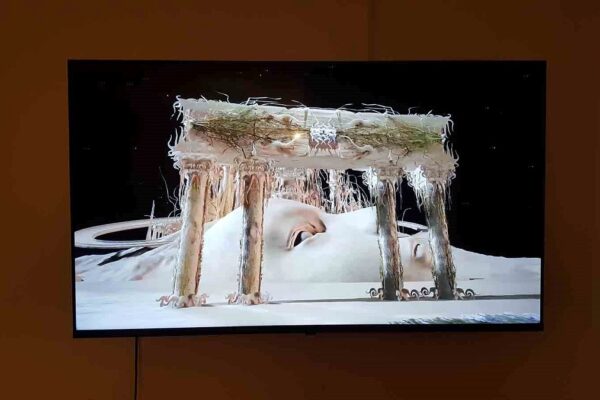
PHOTOGRAPHY / Experimental Fields by Xi Li and Memory Sites by Fletcher Aldous, Kailum Graves, Starry Kong and Remi Siciliano. At PhotoAccess until September 7. Reviewed by CON BOEKEL.
Rather than skating across numerous works by numerous artists in a group exhibition, I review here just three of the works on display.
I responded strongly to Xi Li’s Prosperity or Emptiness. It is a video with sound. As if wearing a virtual reality viewer, we travel through an imagined 3D world – much like those which provide settings for video games.
The general field is a post-apocalyptic landscape featuring ruins and a total lack of organic life. Biodiversity is regenerating from the edges by way of green shoots, tendrils and runners. The landscape is framed by sinuous and delicate shapes, many on the vertical axis. These are just so beautiful. They would appear naturally in works-in-progress at a glassworks.
The ruined civilization is littered with cultural cues, stairways to nowhere, classical ruins, triumphal arches and razor wire among them. There is some archaeological fun to be had in deciphering them.
The centrepiece is a face emerging from the sand. It evokes the lines of Shelley:
My name is Ozymandius, King of Kings;
Look on my Works, ye Mighty, and despair!
Nothing besides remains. Round the decay
Of that colossal Wreck, boundless and bare
The lone and level sands stretch far away.
The serene face in Prosperity or Emptiness contrasts sharply with Ozymandias’ sneering visage. It may thus trigger a different take on humanity and its hubris. Either way, the apocalypse lurks.
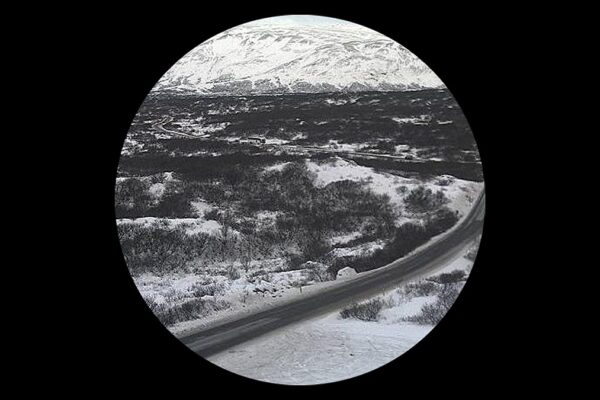
Kailum Graves’ Spukhafte Fernwirkung succeeded in half-hypnotising me. I just did not want to leave it. I returned to it again and again. It is 36-minute digital video with sound.
To inform road users Iceland has a comprehensive set of webcams along its main road. From these, Graves collected images for a year. He then digitally manipulated them before collating them into a video.
Some of the post-processing seems to have involved unsharpening the images. The range of hues has been minimised. Colours appear to have been desaturated. Contrasts have been minimised. Mists, feverish clouds, scudding waves, spume and low-angle sunlight add to the dreamscapes.
What we see are Icelandic landscapes changing through the days and through the seasons.
Mountains, snow, grasslands, streams, fumaroles, rocky slopes, liquid ponds and frozen ponds combine to ground the landscapes physically. Snow poles along roads, road signs, bridges, vans, cars and fences ground the landscapes culturally. Vehicles flicker through as if going from nowhere to nowhere.
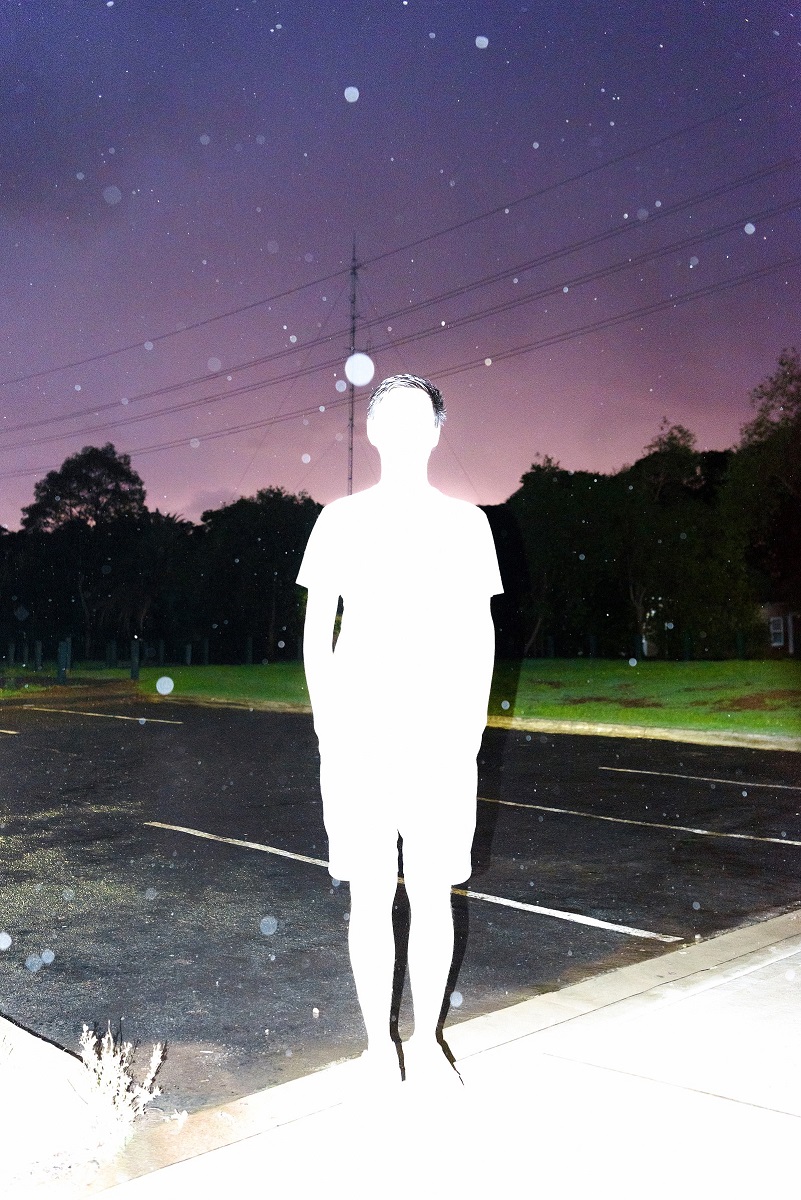
The accompanying mood music is of eerie winds keening across treeless plains.
The visuals and the sounds vibrate rhythmically – perhaps from dawn to dusk, perhaps from the near-perpetual daylight in the summer melt season to the long darkness of the winter snow season. Vision and sound are perfectly calibrated.
The impact is utterly mesmeric.
The exhibition notes state that Grave’s conceptual underpinning is an exploration of the loss of boundaries between culture, technology and the environment.
Just so.
Starry Kong uses photographic techniques to express the intense emotions following her mother’s death. Flash and high levels of exposure are used. In You can’t walk this earth forever. Someday you will have to fly it is as if Kong’s inner emotions half-obliterate the outer world. The concept and the execution blend seamlessly.
Add the other works on display, and this exhibition is a must-see.
Who can be trusted?
In a world of spin and confusion, there’s never been a more important time to support independent journalism in Canberra.
If you trust our work online and want to enforce the power of independent voices, I invite you to make a small contribution.
Every dollar of support is invested back into our journalism to help keep citynews.com.au strong and free.
Thank you,
Ian Meikle, editor
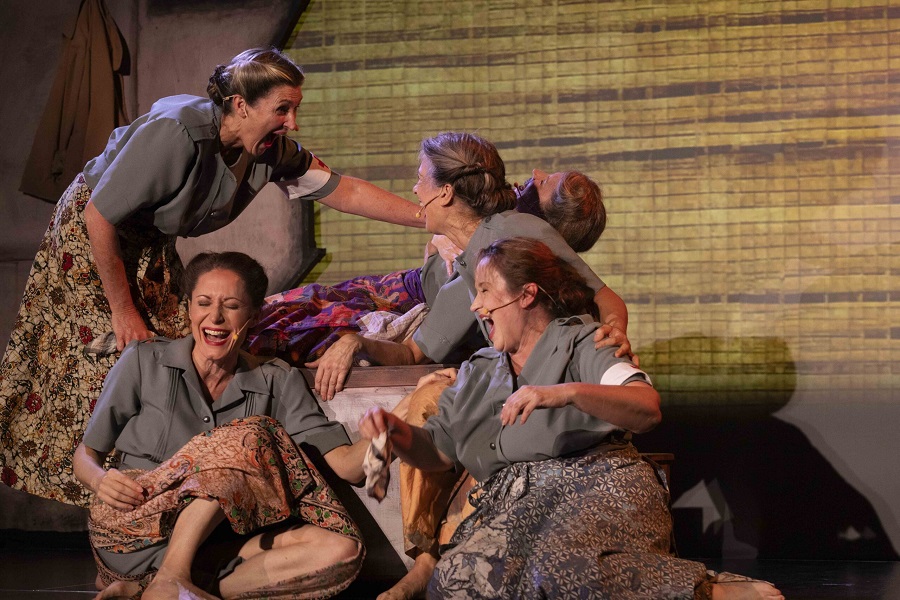

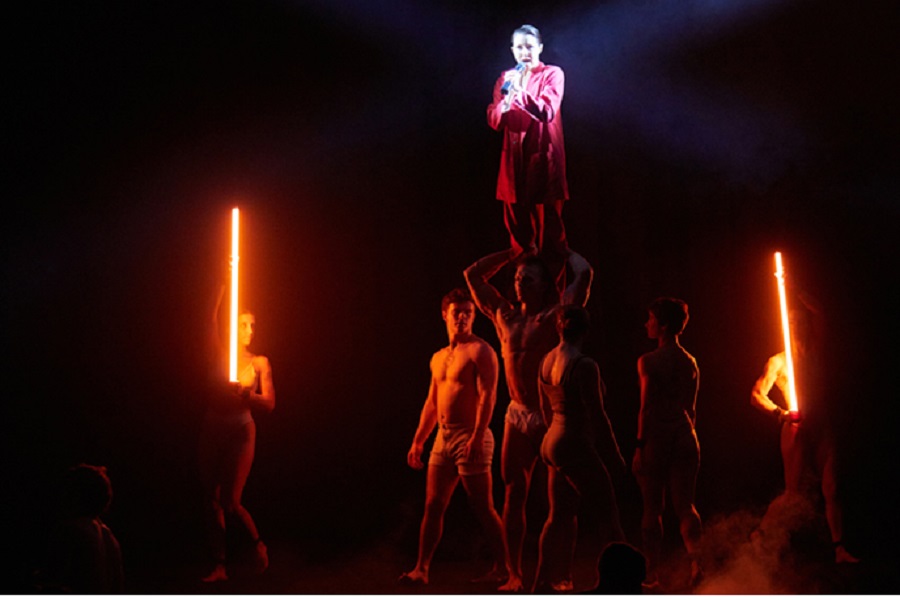





Leave a Reply